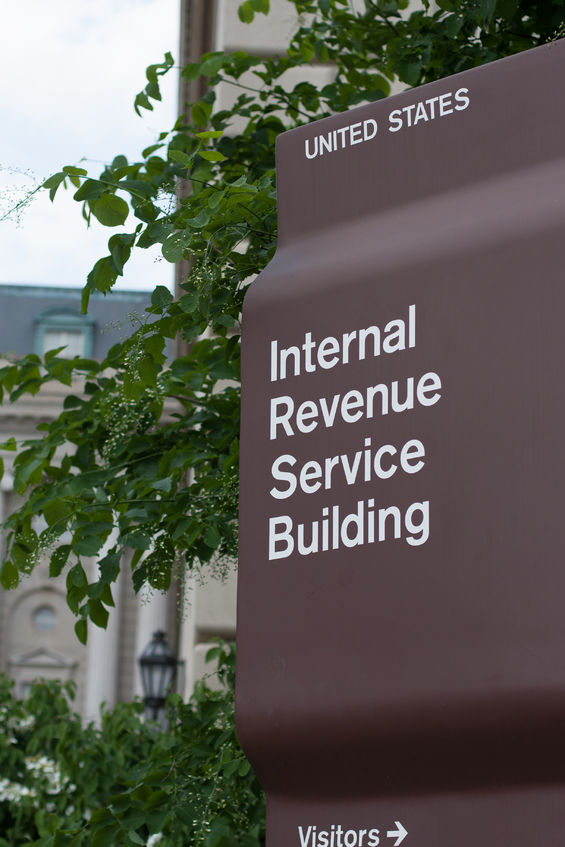Latest Facts and News
- Unlimited Look-Back: The IRS can assess and collect taxes from any year when a taxpayer did not file a return; no statute of limitations applies until a return is filed.
- Administrative Six-Year Rule: The IRS often only requests the last six years of returns to reestablish compliance, unless there are signs of fraud.
- Refund Deadline: Taxpayers can only claim refunds for the previous three tax years from the original filing deadline.
- Penalties and Interest: Failure-to-file penalties max out at 25% after five months; interest accrues on all unpaid taxes until resolved.
- Substitute Returns: IRS may file substitute returns (SFRs) using 3rd-party data if you don’t file, leading to harsh assessments.
It’s surprising how often people forget about old tax years they never filed for. Those missing returns don’t just disappear over time. In fact, the IRS can go back and reopen those years whenever it wants. Tax situations like these quietly build up, sometimes without much notice, and that’s why understanding the IRS statute of limitations on unfiled tax returns is so important.
This blog post explains important facts about unfiled tax returns, how the IRS handles them, and what clear steps taxpayers can take to address these issues effectively. Read along to learn the key facts and practical steps you can take.
Understanding the IRS Statute of Limitations on Unfiled Tax Returns
When we talk about the IRS statute of limitations on unfiled tax returns, we are basically talking about the time the IRS has to check or take action on a tax return. For most situations, there is a clear time frame. But when a return has never been filed, things work very differently. In fact, in those cases, there is no time limit at all. That is why unfiled returns are treated more seriously than late‑filed ones.
No Statute of Limitations for Unfiled Returns
The rule here is simple: if you never file a return, the time limit never begins. The tax code itself, Internal Revenue Code Section 6501(c)(3), makes this clear. In such situations, the IRS can review and assess taxes at any point in the future because the statute never starts running.
In simple words, filing the return is what activates the time limit. Without a filing, the year remains open forever.
Legal Foundation and Court Precedents
This is not simply an IRS policy; it comes directly from federal law. Courts have consistently supported this rule, holding that taxpayers only gain the protection of deadlines once a return is filed. Until then, the IRS has full authority to keep those tax years open.
Unfiled Tax Returns Statute of Limitations vs. Other IRS Time Limits
Various deadlines are involved in what the IRS is accomplishing. There are no deadlines for returns not filed at all, but there are other laws involving taxes at specific deadlines. Knowing those differences is useful in making sense out of what the IRS accomplishes at specific deadlines.
Assessment Statute of Limitations (ASED)
It governs the time frame that the IRS is permitted to assess additional tax once a return is filed.
- The regular timeframe is 3 years after filing for a return.
- 6 years into the event, over 25% of income was absent.
- There is no restriction if there is any fraud or if no return is filed at all.
It’s significant because it provides a specific boundary for how far in the past the IRS can reach in order to increase a tax amount, unless it’s for fraud or an individual didn’t file.
Collection Statute of Limitations (CSED)
The collection statute only kicks in once a tax is assessed. At that point in time, a fixed timeframe is granted for the IRS in order to collect.
- 10 years is the standard period the IRS has to collect unpaid taxes.
- Some activity on the taxpayer’s part, such as filing for bankruptcy, requesting installment agreements, or departing for another country, can suspend or elongate the deadline.
Once this period is over, no longer can the IRS collect money in a legal manner even if there remains unpaid some tax.
Refund Claim Statute of Limitations
This law applies to the taxpayer instead of the IRS. It explains how much time you have to ask for a refund or credit.
- You are entitled to a refund for 3 years since you first subscribed.
- 2 years after the payment date, if it is later than the 3 years.
- The refund is lost completely if it is not requested at an early date.
This rule makes it equally imperative to make returns on time if you are in line for a refund, since you cannot claim uncollected refunds once the deadline is over.
How Far Back Can the IRS Go for Unfiled Taxes?
As discussed above, the IRS statute of limitations on unfiled tax returns only starts once you file a tax return. So, legally, there is no limit to how far back the IRS can look when you haven’t filed. That means they can potentially review, assess, and collect taxes on any tax year, even if it was many years ago.
However, in practice, the exact number of years the IRS wants to review can differ depending on your particular situation and some important factors.
The Six-Year Administrative Rule
The IRS generally expects taxpayers to file tax returns for the last six years. This is what they use as a practical guideline to decide what years you need to be current on.
- Keep in mind, this isn’t a strict law but more of an internal rule for IRS enforcement staff.
- Filing for six years usually satisfies most IRS concerns unless your case involves really high income or fraud.
- This rule helps the IRS focus on more recent years, where they believe they are most likely to collect owed tax.
Factors That Extend the IRS Look-Back Period
Sometimes, the IRS will want returns for more than just the last six years if:
- You had a high income in the years before those six.
- The IRS suspects fraud or intentional hiding of income.
- You have a history of filing returns late or not filing at all.
- You owned a business or had complicated financial activities.
When the IRS May Require Fewer Years?
There are also situations when the IRS might accept fewer years of returns, such as:
- If you had very low or no income in those years.
- If it’s your first time filing and you’re coming forward on your own.
- If you’re experiencing financial hardship or other hardship circumstances.
Consequences of Unfiled Returns Over Time
If tax returns aren’t filed on time, the IRS applies increasing penalties and takes enforcement actions based on how long the returns remain missing. This leads to growing financial and legal trouble, so it’s important to understand the timeline of these consequences.
Immediate Penalties and Interest (0-5 Months)
During the first few months after missing the filing deadline, penalties and interest start adding up quickly.
- The failure-to-file penalty is 5% of the unpaid tax per month or part of a month, up to a maximum of 25% after five months.
- The failure-to-pay penalty is 0.5% per month (or part of a month) on unpaid taxes and continues until fully paid.
- Interest also accrues daily on unpaid tax and penalties at a rate of 7% per year, compounded daily, increasing the total amount owed until everything is fully paid.
- If you owe taxes but file late, penalties apply; if you are due a refund, the IRS does not charge failure-to-file penalties (although you must file within 3 years to claim it).
Medium-Term Consequences (6 Months – 2 Years)
If taxes and returns remain unpaid and unfiled, IRS enforcement escalates.
- Failure-to-file penalty will have reached its 25% cap.
- The IRS may file a Substitute for Return (SFR) based on available records, which typically results in a higher tax bill since there are no deductions or credits given.
- The IRS may begin collection actions such as tax liens against property and levies on bank accounts or wages.
Long-Term Enforcement Actions (2+ Years)
When tax problems persist without resolution, the IRS may take harsher actions to recover money owed.
- The IRS has the authority to seize assets, including property and bank funds.
- Your employer can be required to garnish wages to satisfy tax debts.
- Being labeled a seriously delinquent taxpayer can lead to passport restrictions.
- The IRS may refer cases for criminal investigation in cases of fraud or willful evasion.
Additional ConsequencesIf returns aren’t filed within 3 years of the due date, any refund you are owed will be lost permanently.IRS liens from unpaid taxes can negatively affect your credit score and ability to get loans or mortgages.You won’t be able to claim certain saving credits, like the Earned Income Tax Credit, without filing.
IRS Enforcement Patterns for Unfiled Returns
When someone doesn’t file their federal tax return, the IRS doesn’t just do nothing. Instead, they use a mix of computer checks and focused programs to find out who missed filing and then work to collect what is owed. Here’s how the process typically works and what kind of penalties and actions you might face if you stay off the IRS’s radar for too long.
Third-Party Information Matching
The IRS gets copies of W-2s, 1099s, and K-1s directly from employers, banks, and other financial institutions. Their computers match this info with the tax returns people file. If their system doesn’t find a match, it sees this as a red flag and will flag your account for follow-up.
- This matching happens automatically and is one of the main ways the IRS spots people who haven’t filed when they should have.
- The IRS can use data mining and artificial intelligence now, so non-filers are more likely than ever to be noticed.
- A notice or letter is often the first step anyone hears if there’s a mismatch or missing return.
Enforcement Priority Factors
Not everyone gets the same attention from the IRS. Their enforcement teams focus more on:
- People with higher incomes
- Cases with bigger unpaid taxes
- Repeat non-filers (those who skip filing year after year)
- Accounts where there’s a sign of fraud or things look intentionally hidden
The IRS uses these priorities to decide how much effort to spend and what type of enforcement action to start.
Typical IRS Contact Timeline
If the IRS thinks a return is missing, they usually start with notices in the mail:
- First, you’ll get a reminder or a letter asking you to file.
- If ignored, the IRS may file a Substitute for Return (SFR) for you, which usually makes your tax bill bigger because it uses only the information they have (often without deductions or credits).
- After that, bills and more serious collection notices start. These can lead to tax liens and eventually levies on your wages or bank accounts if the situation isn’t fixed.
The time from the first letter to collection can be several months to a few years, but things move faster if large balances or high incomes are involved.
State vs. Federal Unfiled Returns Statute of Limitations
States can also take action if you don’t file state taxes. Each state sets its own deadlines or statutes of limitations for checking tax returns and collecting unpaid tax. If you never file, most states (just like the IRS) don’t start their audit or collection clocks, so they can go back as far as needed to assess or collect.
Some examples of state rules:
- California: No time limit for unfiled returns; if you file, the audit window is typically 4 years.
- New York: Open-ended for unfiled returns; usually 3 years after a return is filed for audits.
- Texas: No income tax, but other state taxes (like sales tax) can be audited indefinitely if never filed.
- Illinois, Arkansas, Georgia: Usually a 3–4-year statute for filed returns, but no limit for unfiled years.
States may also add their own penalties and interest, which can make the total owed much larger over time.
- Penalty amounts and interest rates vary by state, so it’s smart to check with the state tax department for exact details.
Sometimes, states and the IRS share information and work together to find non-filers. Enforcement can include letters, liens, or collection actions, just like on the federal level.
Coordination Between AgenciesThe IRS and states often share information about non-filers and high-risk cases.Joint enforcement can mean getting letters from both the IRS and your state.Penalties can add up from both sides, making it even more important to address missing returns quickly.
Voluntary Disclosure and Compliance Strategies
If tax returns have not been filed or taxes are unpaid, the IRS encourages voluntary filing before it gets involved. Taking this step early can reduce penalties and legal trouble. It also sets you up better to work with the IRS on payments.
Benefits of Voluntary Filing
Filing your missing returns on your own before the IRS contacts you has real advantages:
- You’ll often get reduced penalties or even avoid some penalties because you’re cooperating.
- You prevent the IRS from filing substitute returns for you, which usually result in bigger tax bills since they don’t count deductions or credits.
- Taking the initiative improves your chance of negotiating manageable payment plans or other agreements.
- Voluntary filing shows good faith and may help avoid criminal charges in many cases.
That’s why coming forward yourself usually works in your favor.
Six-Year Safe Harbor Strategy
The IRS generally expects taxpayers to file at least the past six years of returns to be considered compliant. This is not a firm law but an internal IRS guideline:
- Filing for six years helps demonstrate you’re catching up responsibly.
- It mostly protects you from IRS demands for even older returns unless fraud or very large income issues come up.
- Make sure to keep good records and proof for these years, since the IRS will want to verify your information.
Following this strategy gives you a clearer path to resolving unfiled returns.
Payment Plan Options for Back Taxes
If you owe taxes and can’t pay everything right away, the IRS has several ways to make paying easier.
- You can ask for an installment agreement, which lets you spread out your payments in monthly chunks instead of paying a big bill all at once.
- There’s the short-term payment plan; if you owe less than $100,000 total, you can take up to 180 days to pay it in full.
- If you owe $50,000 or less, you might qualify for a streamlined installment agreement that lets you pay over up to 72 months (6 years). This usually doesn’t require a detailed financial check. If you owe between $25,000 and $50,000, the IRS will want you to set up automatic bank withdrawals.
- If you owe more than $50,000, you’ll need a non-streamlined installment agreement and have to provide financial details like income, assets, and expenses. The IRS might file a tax lien to protect its claim.
- The guaranteed installment agreement is for those who owe $10,000 or less, have filed all their returns, and have been good with the IRS in the past 5 years. The IRS won’t file a lien if you keep up with payments.
- If you cannot pay all your taxes but can pay some, the IRS offers partial payment installment agreements. These require financial disclosure, and the IRS may file a lien.
- There’s also the Currently Not Collectible status if you’re facing serious financial hardship. It pauses collection efforts but doesn’t erase your debt.
- Lastly, the Offer in Compromise program lets you settle your tax debt for less than the full amount if you can prove you can’t pay everything. This option requires solid documentation and review.
These programs exist because the IRS wants taxpayers to pay what they can afford without forcing harsh collections that might make things worse.
You can apply for most of these plans online, by phone, or by mail. Using online self-service is usually faster and cheaper.
If your situation involves undisclosed foreign income or offshore assets, consider the Offshore Voluntary Disclosure Program provided by Verni Tax Law.
Substitute for Return (SFR) Process and Implications
When taxpayers don’t file required tax returns, the IRS can create what’s called a Substitute for Return, or SFR. This means the IRS files a tax return on your behalf using information it gets from third parties, like employers or banks. But the catch is, this IRS-created return doesn’t include any personal details like deductions, credits, or exemptions, which usually means you end up owing a lot more than you should.
Filing a substitute return is not the IRS trying to help; it is a way to protect its right to collect taxes. It’s important to know your rights if this happens and how you can fix or challenge these returns.
When Does the IRS File Substitute Returns?
Before filing an SFR, the IRS will usually send you several notices letting you know they haven’t received your tax return. If you don’t respond or file your own return after these letters, the IRS gets the go-ahead to prepare an SFR.
The IRS typically uses wage and income documents like W-2s and 1099s, but because they don’t have full information, the SFR may assume you are single, have no dependents, and use the least beneficial filing status for you.
After the SFR is filed, the IRS sends a Notice of Deficiency (sometimes called a 90-day letter) that shows what the IRS thinks you owe. Penalties and interest start right away, and if you don’t act, the IRS can begin collection efforts like liens or levies.
Limitations of Substitute Returns
Substitute returns don’t give you any of the tax breaks you might be eligible for. That means:
- The IRS uses only the standard deduction.
- Dependents, exemptions, or credits are usually ignored.
- Filing status defaults to something that usually results in higher tax (like single or married filing separately).
- Because of this, the assessed tax is often higher than you actually owe.
This can make the SFR a costly mistake if you don’t respond quickly.
Challenging and Superseding SFRsIf you get a substitute return filed against you, it’s not too late. You can:File your original tax return for the year in question—even if the IRS already filed an SFR.Your return will replace the SFR and correct the tax amount, usually lowering what you owe.If needed, you can file an amended return later if you made mistakes or want to claim additional deductions.If there’s a dispute, you can request an audit reconsideration or appeal the IRS’s assessment.It’s often wise to consult a tax professional in this situation because SFRs can be complex and costly if ignored.
Criminal Implications and Tax Evasion Charges
Failing to file taxes or willfully hiding income can lead to serious criminal charges. The IRS and the Department of Justice (DOJ) distinguish between simple mistakes and intentional wrongdoing. When someone willfully avoids filing or evades taxes, it can trigger misdemeanor or even felony charges.
Understanding these criminal risks is important because penalties include hefty fines and even jail time.
Willful Failure to File (IRC § 7203)
Willful failure to file is when a person intentionally does not file a required tax return. It’s considered a misdemeanor but taken seriously.
- You can face fines up to $25,000.
- There can be up to one year in jail for each unfiled tax year.
- The IRS has to prove the failure was intentional, not just an oversight.
- Prosecution usually happens for repeated non-filers or substantial amounts owed.
Tax Evasion Charges (IRC § 7201)
Tax evasion is more serious than just failing to file. It involves knowingly using illegal means to avoid paying taxes, such as hiding income or falsifying records.
- Tax evasion is a felony.
- It can lead to fines up to $250,000 for individuals or $500,000 for corporations.
- Prison sentences can be as long as 5 years.
- The IRS looks for “affirmative acts” showing deliberate efforts to cheat, like creating fake documents or hiding money offshore.
Criminal Investigation Process
When the IRS suspects criminal activity, its Criminal Investigation (CI) division investigates.
- They collect evidence, including financial records and witness statements.
- Cases are referred to the Department of Justice for prosecution decisions.
- Typical investigations can take months or years before charges are filed, depending on case complexity.
CI agents may execute search warrants and conduct interviews as part of their work.
It’s important to remember that most tax problems are handled civilly. Criminal cases tend to be reserved for willful, serious violations.
Learn More About Tax Fraud and Criminal Defense Services
Start Fixing Your Tax Issues Today with Verni Tax Law
When tax returns have not been filed, the IRS keeps those years open with no time limit, and penalties plus interest just keep adding up. This can lead to serious consequences, including large tax bills, liens, or even legal trouble. The tax laws around unfiled returns are complex, and trying to handle this alone can be risky and confusing.
At times like this, professional help becomes essential. You want someone who knows the tax code deeply, understands IRS processes, and has experience representing taxpayers facing these challenges.
Anthony N. Verni personally handles each case. He is both a tax attorney and a certified public accountant. This unique combination means he not only advises on legal rights and defenses but also understands the detailed tax and accounting issues involved. His expertise covers U.S. taxpayers and expatriates abroad, including complex situations involving criminal investigations, offshore assets, and FBAR penalties.
If you have unfiled returns or owe back taxes, don’t hesitate. Contact Verni Tax Law today for a confidential consultation. Expert help is available, and the sooner you act, the stronger your position will be.
FAQs
1. Do unfiled tax returns from the 1990s still matter?
Yes, there is no statute of limitations on unfiled returns, so the IRS can still assess taxes from the 1990s. However, they typically focus on the most recent 6 years unless high income or fraud is involved.
2. Can I go to jail for not filing tax returns from several years ago?
Yes, willful failure to file is a misdemeanor punishable by up to one year in jail per unfiled year, though prosecution typically requires substantial tax owed and clear willful intent.
3. Will filing old tax returns restart the statute of limitations?
Filing unfiled returns starts the 3-year assessment period and 10-year collection period, but this is beneficial as it limits the IRS’s future authority and stops penalty accumulation.
4. Can the IRS take my house for unfiled tax returns from years ago?
Yes, the IRS can place liens and potentially seize property for taxes from unfiled returns, regardless of how old they are, once they assess the tax liability.
5. What happens if I had refunds coming but never filed those old returns?
You forfeit refunds if you don’t file within 3 years of the original due date. The IRS keeps unclaimed refunds permanently after this deadline.







